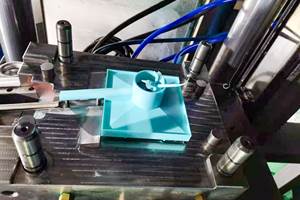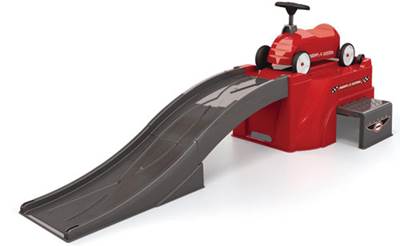Additive Mfg: Transitioning from SLA to 3-D Printing Leads to New Projects
Perhaps the time has come to investigate the opportunities 3-D inkjet-based printer technology can bring to your shop.
For approximately 20 years rapid prototyping (RP) service bureaus and moldmakers have relied on SLA machines, even as newer technologies have come along with advanced features at a lower equipment cost. Perhaps the time has come to investigate the opportunities 3-D inkjet-based printer technology can bring to your shop—including high quality of parts, broader variety of materials that can be used, increased speed, and potential new business in the form of being able to fill all of your customers’ RP needs.
A high-resolution 3-D printer is approximately one-quarter to one-half the cost of a new, large platform SLA machine. Part quality is equal and the machines are faster in building certain geometries. Some top-of-the-line models can jet multiple materials simultaneously. By blending 10 base materials in different ways, companies can get 60-plus different digital materials—giving customers unprecedented choice—and enabling a mix of more than 10 different mechanical properties in a single printed part.
When considering a switch, remember that part quality is the number-one priority. Analyze the specs. Produce and test dozens of parts. When changing from SLA to 3-D printing, RP service bureau VistaTek discovered that part quality was on par with—and sometimes better—than SLA and little finish work was needed. VistaTek went from 13 employees in finishing and programming with five SLA machines in their Additive Manufacturing Division to five employees when they changed over to five Objet Polyjet machines. They did not have to replace employees when they retired and they were able to cross train the additional employees to work in one of the other two divisions (Rapid Tooling or Injection Molding).
The biggest advantage was the variety of materials. These materials allowed VistaTek to offer a range of soft durometers from 27 Shore A to a ridged 83 Shore D. They were pleased with this, as well as the fact that with Objet Connex machine, they could blend the materials to create overmolded parts, soft touch parts and living hinged parts. Moreover, since multiple materials can be jetted on a single tray, many jobs can be run at once with no delays—or lost business. This also helps lower the cost of production and improve margins.
Before VistaTek completely made the move to 3-D printing, the company performed a final test by comparing SLA parts to 3-D parts. The company took a part order from several customers that it had traditionally produced using SLA, and produced it on a 3-D printer—without telling the customers. Not one customer noticed the difference, except to compliment the company on the material variety it was now able to provide. People were just accustomed to ordering by brand and not function.
Then VistaTek gradually transitioned to 3-D printing only, and the benefits continue. Material choice is the primary benefit—dozens of materials can be stocked instead of just a few. The company can serve as a one-stop shop for all of its customers. In 2010, the company’s tooling business achieved double-digit growth and its injection molding business showed triple-digit growth. They also have the ability to work more closely with customers on product development and to handle a greater variety of its rapid prototyping and molding needs—and has resulted in more rapid tooling and injection work in addition to stronger customer relationships, growing revenue and higher profits.
Related Content
MoldMaking Technology's Most-Viewed Content 2022: Products
MMT shares the five top-viewed technologies, equipment and services of 2022 in each Engineer, Build, Maintain and Manage tenet based on Google Analytics.
Read MoreMMT Chats: 4 Keys to a Successful Mold-Building Operation: Innovation, Transparency, Accessibility and Relationship
MoldMaking Technology Editorial Director Christina Fuges chats with Steve Michon, co-owner of Zero Tolerance in Clinton Township, Michigan, about the excitement of solving problems, the benefits of showing gratitude, the real struggle with delegation and the importance of staying on top of technology. This episode is brought to you by ISCAR with New Ideas for Machining Intelligently.
Read MoreLarge Hybrid Steel Insert Solves Deformation, Dimensionality, Cycle Time Problems
DMLS printers using metal additive powders selected by Linear AMS to produce high-quality, accurate, consistent 3D-printed mold components with certification and traceability.
Read MoreEvaluating Metal Powders for Conformally Cooled Mold Inserts
Mechanical properties and design software techniques reveal the benefits of a modified high thermal conductivity metal powder for 3D printing in moldmaking.
Read MoreRead Next
3D Printing Provides New Options for Prototyping, Moldmaking
Case Study / Additive Manufacturing.
Read MoreHow to Use Strategic Planning Tools, Data to Manage the Human Side of Business
Q&A with Marion Wells, MMT EAB member and founder of Human Asset Management.
Read MoreReasons to Use Fiber Lasers for Mold Cleaning
Fiber lasers offer a simplicity, speed, control and portability, minimizing mold cleaning risks.
Read More.jpg;maxWidth=970;quality=90)









.jpg;maxWidth=300;quality=90)















